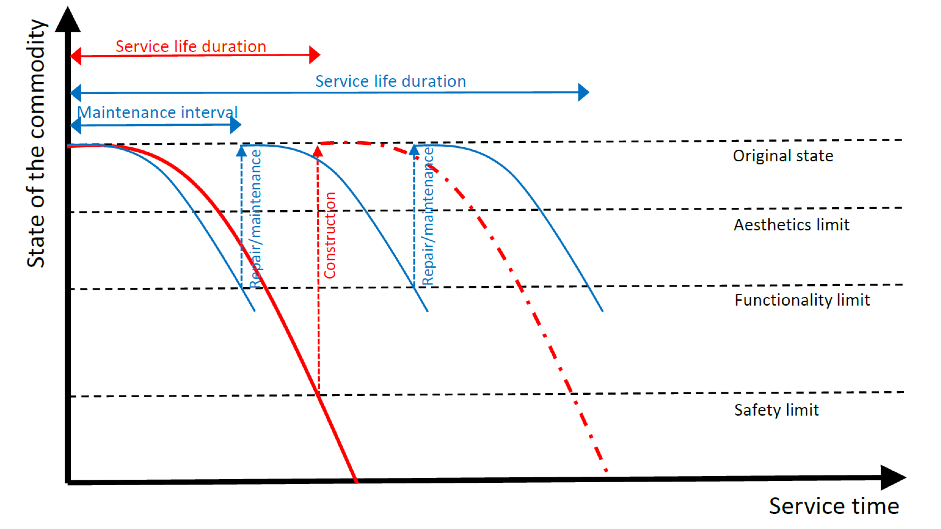Service life of timber structures - BRE Group
Predicting the service life of timber structures
By Jonas Niklewski and Eva Frühwald Hansson
Service life of timber structures
Timber structures and commodities are exposed to several mechanisms that limit their service life. The term service life refers to the duration until a limit state is reached, i.e. when the performance is no longer deemed acceptable. A structure can have several limit states relating to different performance criteria, such as safety, functionality and aesthetics. The service life depends on a set of relevant performance criteria, the acceptable limits states, the mechanisms involved as well as maintenance to counteract the effect of those mechanisms, as illustrated in the figure below. For example, a façade should remain tight, maintain some level of structural integrity and remain aesthetically appealing. As such, there are several mechanisms and limit states involved in the service life assessment. On the other hand, the main concern of a structural beam is safety, which often involves only wood-destroying fungi as degrading mechanism.

From research to practice
The ClickDesign project aims at developing a tool to predict service life for timber elements and structures. The general objective of WP 6 is to bridge the gap between research and practice. In short, WP6 receives input from other WPs (which are specialized on specific limit states) and puts it into an easy-to-use format, i.e. delivering fingertip knowledge to enable service life specification of wood to the end-user. By having a WP dedicated to parsing and putting research output into context, the goal is to increase the project’s impact and value creation to the end-user. The end-user is anyone who is interested in the long-term performance of wood but unable to read scientific papers and parse the raw data.
Importance of context
Sometimes, scientific models are simply not convenient to use. For example, today we can model the biological degradation of a specific joint in a timber deck made of spruce sapwood using a variety of complex moisture transport models and decay prediction models. However, most end-users are not familiar with such models, nor do they have time to wait for hours to get the results. Other times, the research output needs context. For example, we can predict how the colour of a wooden board changes over time due to superficial photo-degradation, but the end-user is left wondering how this will affect their deck or house. Similarly, we can predict how quickly termites degrade various wood species, but the end-user is perhaps more interested in how they can stop termites from getting into their house in the first place.
Context is key in bridging the divide between research and end-user. We can remove the need for complex models by delivering pre-calculated scenarios and decay maps, we can provide tools to simulate the aesthetical changes of wood structures and we can work towards providing more general guidelines and recommendations to home owners in termite-risk zones.
Challenges
The work of WP6 is extremely interdisciplinary. We need to follow and understand most of the activities in the project, without going too much into detail. Being creative and flexible is key, as we often encounter new types of challenges. For example, a key part in modelling the visual appearance of wood is to visualize organic wood texture. The image below shows the method currently used by the prototype ClickDesign tool, where the wood texture is rendered from a 3D model and projected onto a wooden cladding, whereafter the user can change the degree of weathering to explore how the visual appearance of the wall will change over time.
A first version of the tool is planned to be tested against wood industry people and architects during 2020-2021.
